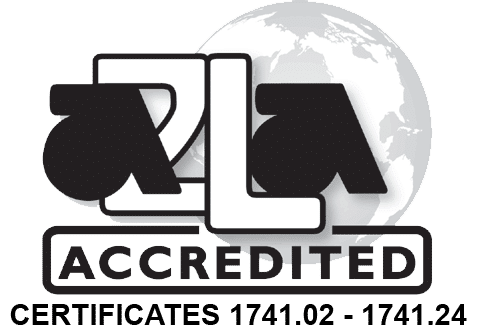What is your acceptable level of risk?
The new ISO 17025:2017 standards’ increased focus on statements of conformity has sparked some great conversations recently about acceptable levels of risk, including false acceptance and false rejection. We wanted to take some time this month to talk through statements of conformity and acceptable risk and share a bit more about how we try to minimize risks internally.
You may be wondering what we mean when we discuss risk as it relates to statements of conformity. This refers to the risk that a calibrated measurement device might find something that is out of tolerance to be in tolerance, or vice versa. As discussed in our previous article about uncertainties, we never know the true value, only the measured value. With the help of uncertainty data, we can place the true value within a small range around the measured value with a relatively high level of confidence. This means, however, that if you are only taking into account the measured value when making statements about whether a device is measuring in or out of tolerance, you could be leaving yourself open to added risk in your process.
The amount of risk you are willing to accept in your measurement data will depend on many factors. Just a few factors to consider include: how critical the measurement is to your process, the cost of raw materials, and the product you are producing. If you are making a medical device your acceptable level of risk will be much lower than that of someone producing a flashlight. While you don’t want either to fail, the failure of one is much more serious than the other. What is right for your process with depend on your application, but understanding the risks associated with uncertainties can help you to better make that evaluation.
Unless otherwise specified by the customer, Cross operates under the “Shared Risk Principle”. This means that statements of compliance, where applicable, are based upon the test results falling within the specified limits with no reduction by the uncertainty of the measurement. Acceptance of the Shared Risk Principle means you as the customer accept responsibility to review the as found/as left data and make a determination regarding the acceptable risk for your quality system. Under our Shared Risk Principle, the Probability of False Acceptance as outlined in ANSI Z540.3 is not determined or calculated. This means that expanded measurement uncertainty could result in a device being falsely accepted or rejected. We do however take precautions to minimize uncertainty and avoid tolerance related issues when calibrating equipment.
To minimize risks associated with the Shared Risk Principle, we require a Test Accuracy Ratio (TAR) of 4:1 in our calibration procedures. This means that the standard being used is at least 4 times more accurate that the accuracy tolerance of the unit under test. On occasion, a minimum 4:1 TAR can be impossible to achieve. In these cases, we evaluate the expanded uncertainty to ensure that measurement results remain valid, or we look at outsourcing to another lab with better uncertainty.
Additionally, when we calibrate equipment we will adjust it to within 70% of tolerance. This means that if we find your equipment to be within tolerance, but on the upper or lower limits without valid cause, we will adjust the equipment so it reads closer to the middle of the acceptable range. Do note that we will make adjustments if feasible and reasonable to do so. There are occasions where devices are not linear and adjustments would cause other functions to be compromised, or they may require repairs to achieve. In these cases, the technician uses their discretion.
While these policies can vary from one metrology company to another, understanding what level of risk is acceptable for your process will help you to have the right conversations and make an educated decision. If you would like to further discuss risk associated with statements of compliance, contact us today to talk with one of our measurement experts.
Want to share or download for later reading? Here’s a downloadable PDF copy: What is your acceptable level of risk?

